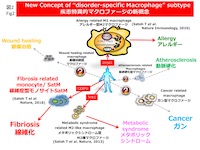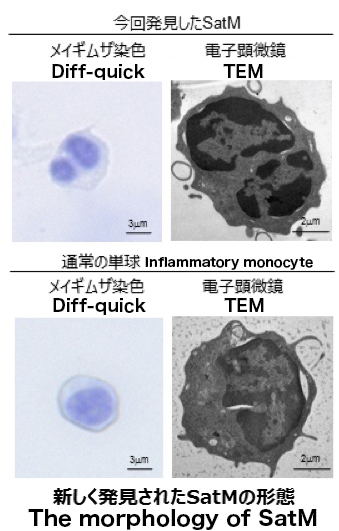Nature. 2016 Dec 21. doi: 10.1038/nature20611.2016/12/22
Monocytes and macrophages comprise a variety of subsets with diverse functions. It is thought that these cells play a crucial role in homeostasis of peripheral organs, key immunological processes and development of various diseases. Among these diseases, fibrosis is a life-threatening disease of unknown aetiology. Its pathogenesis is poorly understood, and there are few effective therapies. The development of fibrosis is associated with activation of monocytes and macrophages. However, the specific subtypes of monocytes and macrophages that are involved in fibrosis have not yet been identified. Here we show that Ceacam1+Msr1+Ly6C−F4/80−Mac1+ monocytes, which we term segregated-nucleus-containing atypical monocytes (SatM) (Above Fig), share granulocyte characteristics, are regulated by CCAAT/enhancer binding protein β (C/EBPβ), and are critical for fibrosis. Cebpb deficiency results in a complete lack of SatM. Furthermore, the development of bleomycin-induced fibrosis, but not inflammation, was prevented in chimaeric mice with Cebpb−/− haematopoietic cells. Adoptive transfer of SatM into Cebpb−/− mice resulted in fibrosis. Notably, SatM are derived from Ly6C−FcεRI+granulocyte/macrophage progenitors, and a newly identified SatM progenitor downstream of Ly6C−FcεRI+ granulocyte/macrophage progenitors, but not from macrophage/dendritic-cell progenitors. Our results show that SatM are critical for fibrosis and that C/EBPβ licenses differentiation of SatM from their committed progenitor. (Fig.2)
Links
- Home
- Achievement
- Research Activities
- Nature. 2016 Dec 21. doi: 10.1038/nature20611.2016/12/22









